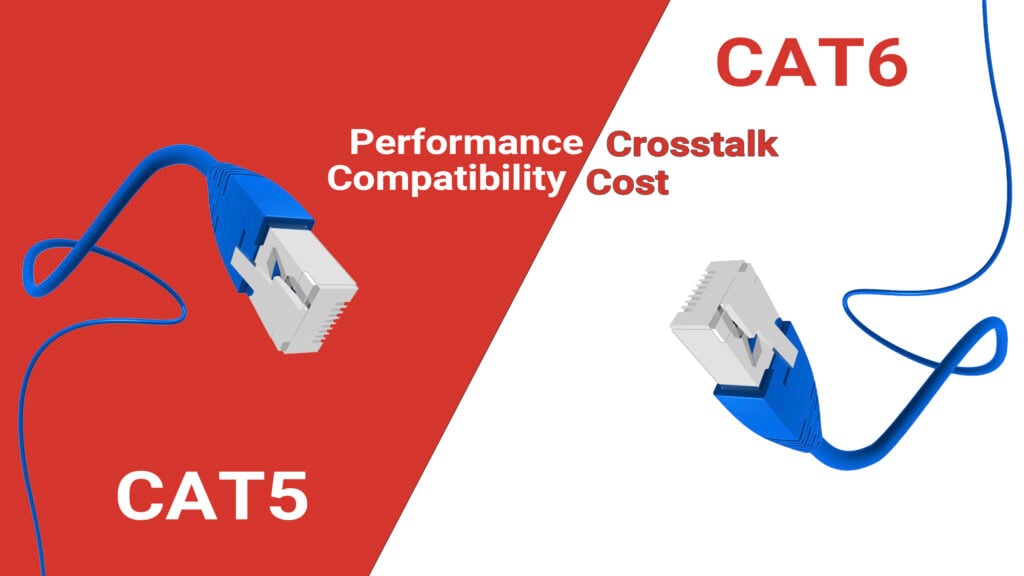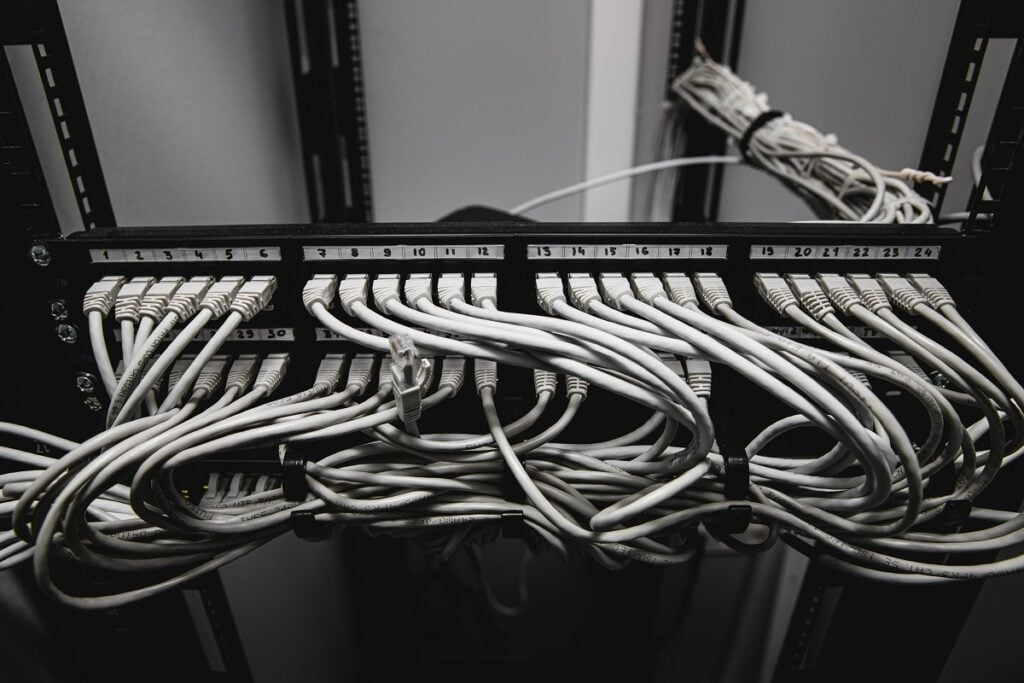Cat 5 vs Cat 6: A Comparative Analysis

Cat 5 vs Cat 6 – what is the best option for your needs?
When it comes to ethernet cables, Cat 5 and Cat 6 are among the most popular choices. Though both are designed to serve similar purposes, there are some notable differences between the two.
Cat5 vs Cat6 Key Differences
| Feature | Cat 5 | Cat 6 |
|---|---|---|
| Maximum Bandwidth | 100 MHz | 250 MHz |
| Maximum Speed | 1 Gbps | 10 Gbps (up to 55 meters) |
| Crosstalk | Standard insulation | Better insulation, less crosstalk |
| Cost | Generally cheaper | More expensive due to better performance |
| Use | Home and small office networks | Larger networks, high-speed internet |
Performance

The most significant difference between Cat 5 and Cat 6 cables lies in their performance capabilities. Cat 5 cables support up to 100 MHz and can deliver up to 1 Gbps in speed, which is suitable for most home and small office networks.
On the other hand, Cat 6 cables support frequencies up to 250 MHz and can deliver up to 10 Gbps over a limited distance of 55 meters. This makes Cat 6 more suitable for environments that require higher data transfer rates or have high-bandwidth needs.
Crosstalk
Crosstalk is electromagnetic interference that can decrease the performance of a cable. Cat 6 cables are designed with better insulation to minimize crosstalk compared to Cat 5 cables. They have a separator that isolates each of the four pairs of twisted wire from each other, reducing the amount of crosstalk within the cable.
Cost
As you might expect, the enhanced performance of Cat 6 comes with a higher price tag. If cost is a concern and your networking needs are modest, Cat 5 might be the more economical choice.
Compatibility
Both Cat 5 and Cat 6 cables use the same end piece, known as an RJ-45 connector, which makes them interchangeable in most applications. However, to get the full benefits of Cat 6’s higher performance, all other networking hardware needs to be compatible with Cat 6.
In conclusion, the Cat5 vs Cat6 choice depends on your specific needs. If you’re looking for a cost-effective solution for a small network that doesn’t require high-speed data transfers, Cat 5 could be sufficient. However, if you need to support a high-performance network, particularly over short distances, Cat 6 would be the better choice.
Which Should You Choose – Cat 5 or Cat 6?
Ethernet cables are the backbone of any wired network. Whether you’re setting up a home network or an enterprise-grade system, the choice between Cat 5 and Cat 6 Ethernet cables can significantly influence your network’s performance, reliability, and future readiness.
When to Choose Cat 5
If you’re on a tight budget and your networking needs aren’t particularly demanding, Cat 5 cables might be the right choice for you. These cables support speeds up to 1000 Mbps (or 1 Gigabit per second), making them suitable for most residential and some small business environments.
Cat 5 cables are also a good choice if you’re working with older hardware, as they’re backward-compatible with networks designed for lower-category cables. However, keep in mind that Cat 5 cables have been largely superseded by Cat 5e cables, which offer improved performance and better protection against crosstalk and signal interference.
When to Choose Cat 6
If performance and future-proofing are your primary concerns, Cat 6 cables are the better choice. These cables support data speeds up to 10 Gbps for lengths up to 55 meters, making them ideal for high-speed networks and data-intensive applications.
Cat 6 cables are also more suitable for environments with high levels of electromagnetic interference, thanks to their improved signal-to-noise ratio. The downside is that they’re more expensive than Cat 5 cables, and their installation can be more complicated due to their thicker, less flexible design.
Factors to Consider When Choosing
When choosing Cat 5 vs Cat 6, consider the following factors: your network requirements, budget, and future expansion plans.
If your network requirements involve standard web browsing, streaming, and light file transfers, Cat 5 might be sufficient. However, for more intensive tasks like running servers, transferring large files, or streaming high-definition content, Cat 6 would be more appropriate.
Consider your budget, too. Cat 6 cables can be more expensive than Cat 5, both in terms of the cables themselves and the higher-grade networking hardware they require.
Lastly, think about your future expansion plans. If you anticipate your networking needs will grow in the next few years, investing in Cat 6 now could save you from a costly and time-consuming upgrade down the line.
Setting the Standard: How the TIA and EIA Define Ethernet Cable Specifications
The standards for Cat 5, Cat 6, and other types of Ethernet cables are set by the Telecommunications Industry Association (TIA) and the Electronic Industries Alliance (EIA). These organizations develop and maintain standards that govern many aspects of telecommunications, including the physical properties and performance characteristics of Ethernet cables.
Specifically, the TIA/EIA-568 standard defines the technical specifications for Cat 5 and Cat 6 cables, including parameters like crosstalk, bandwidth, signal-to-noise ratio, and the maximum length for a cable run. By adhering to these standards, manufacturers ensure that their cables can deliver reliable performance in a wide variety of networking applications.
FAQs
Conclusion
Choosing between Cat 5 and Cat 6 Ethernet cables depends on a variety of factors, including your specific networking needs, your budget, and your plans for the future. While Cat 6 offers superior performance and better future-proofing, Cat 5 or Cat 5e could be more than adequate for less demanding networks or for those on a tighter budget. Always consider the full picture before making your choice.